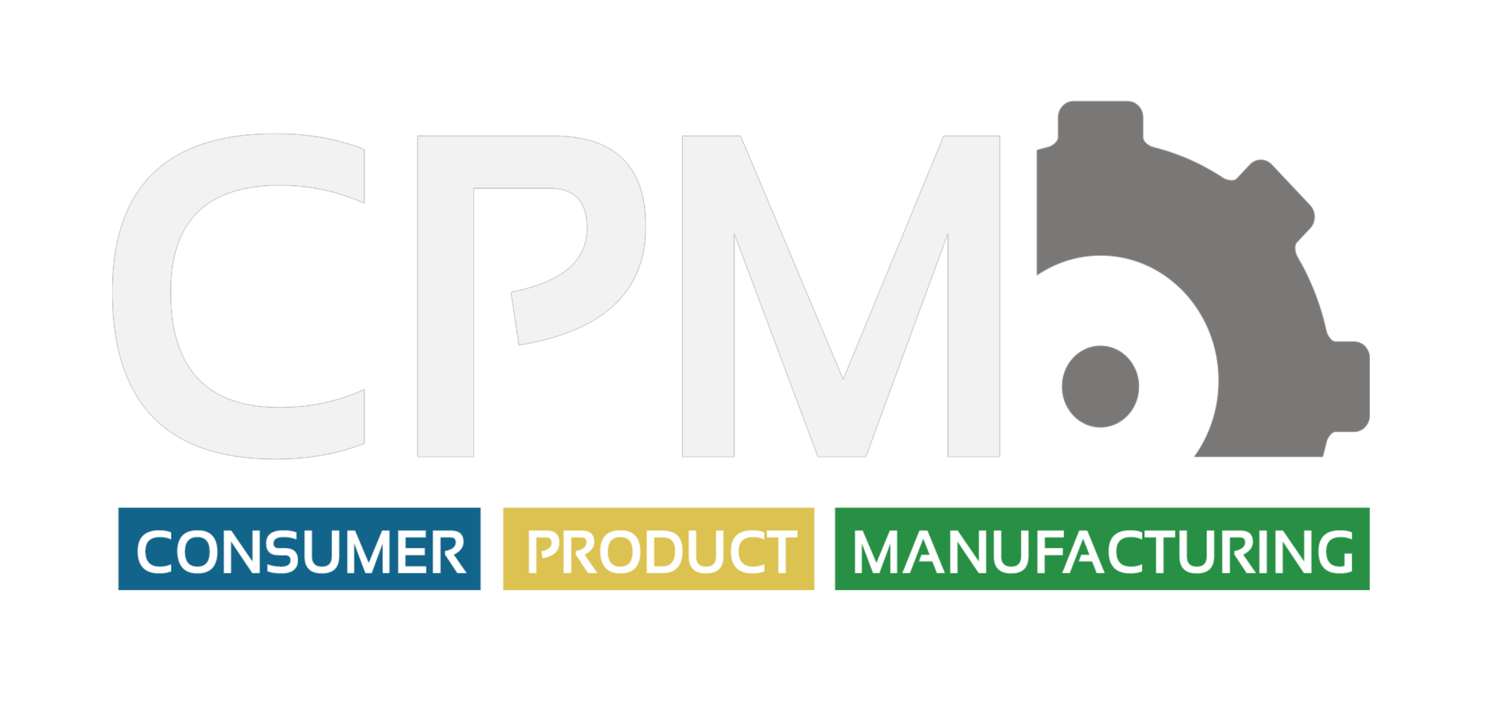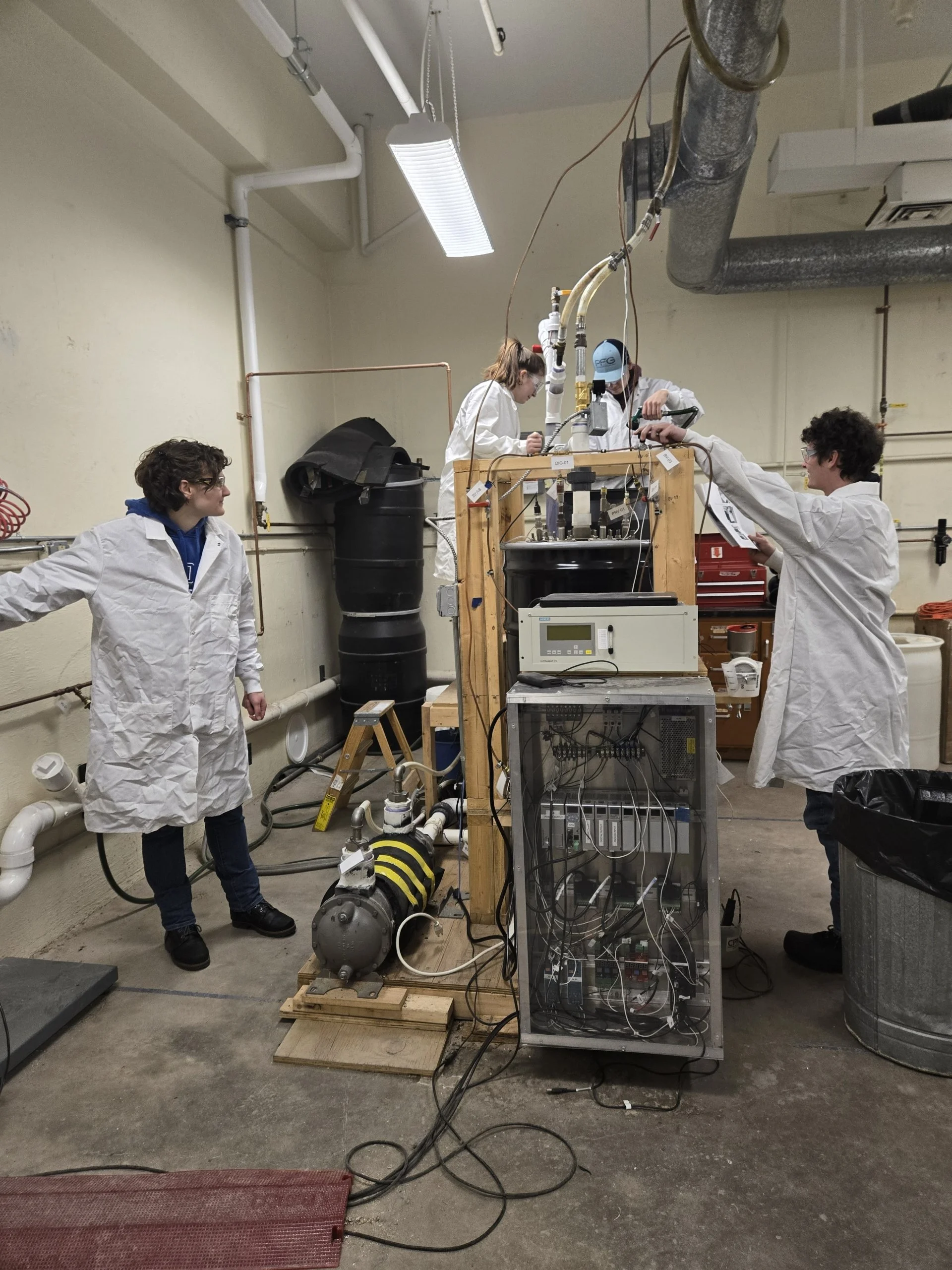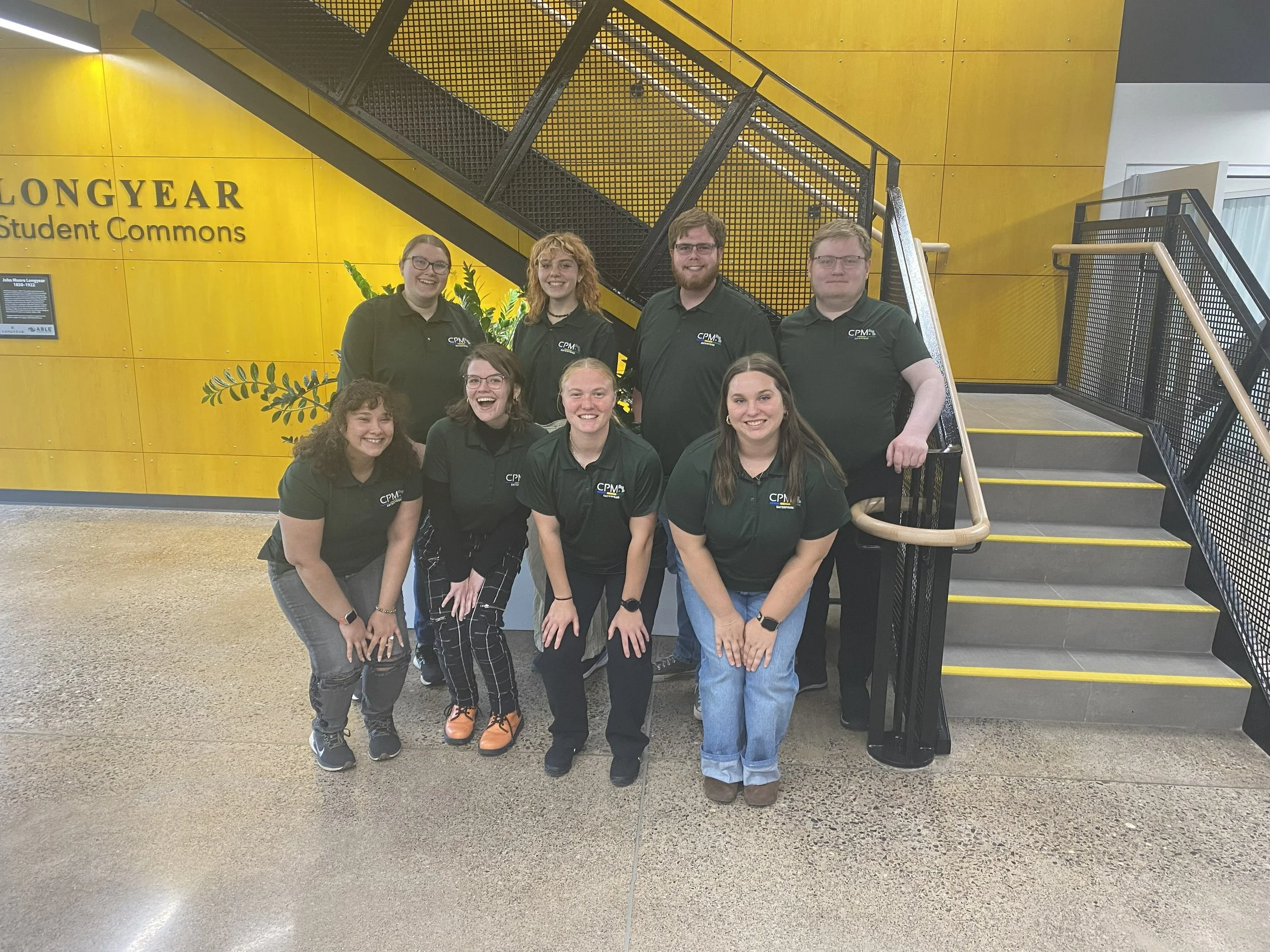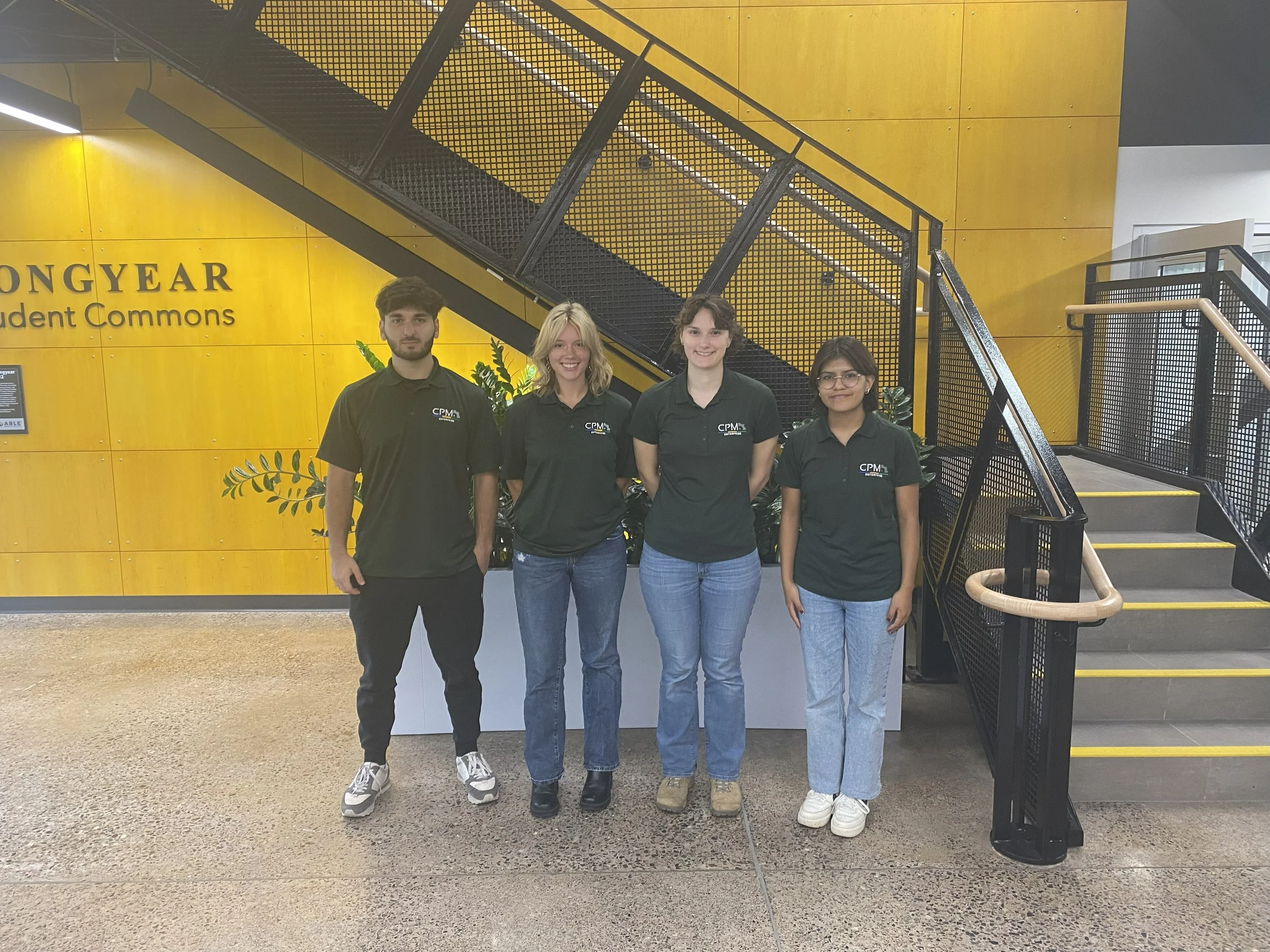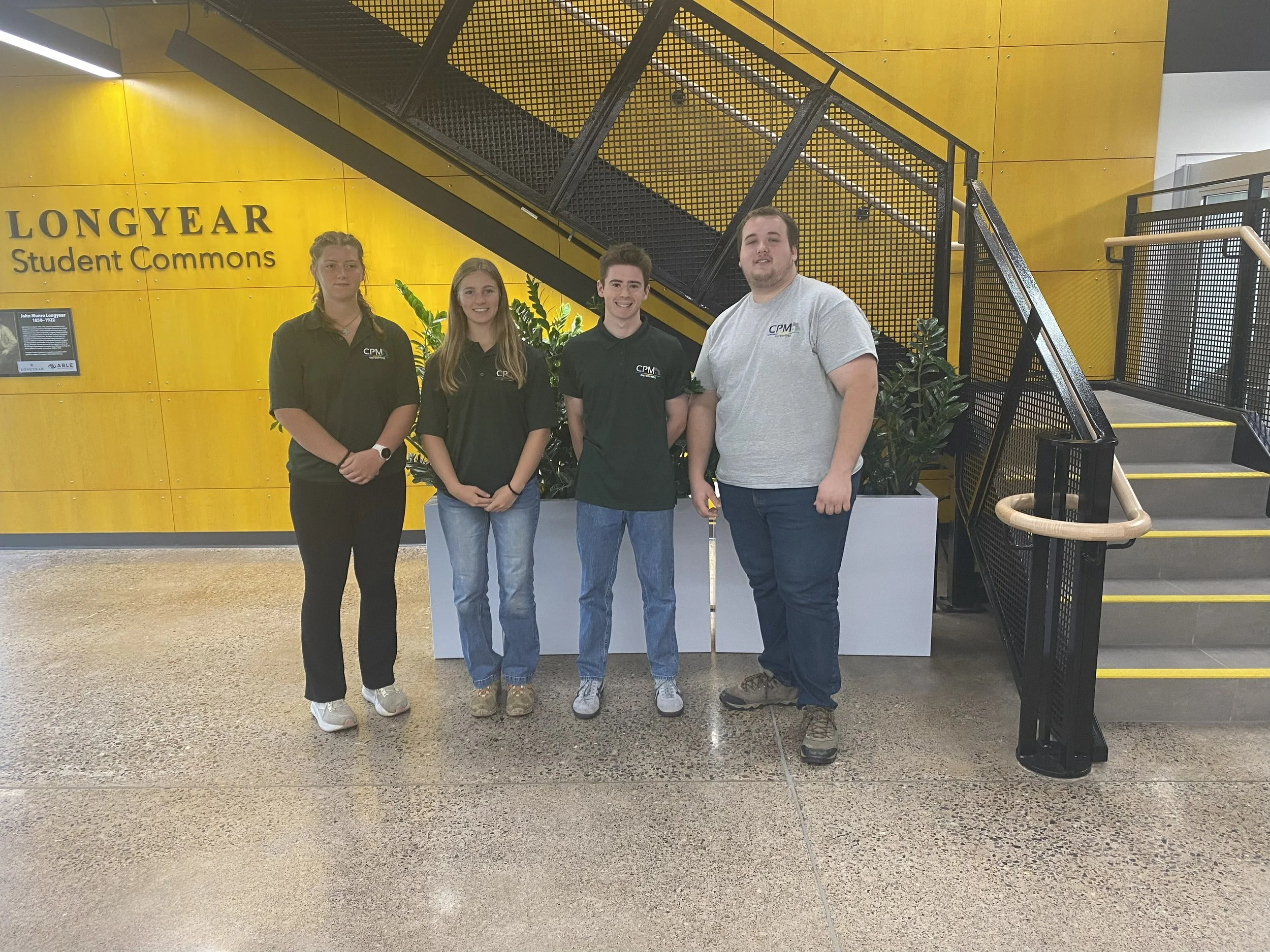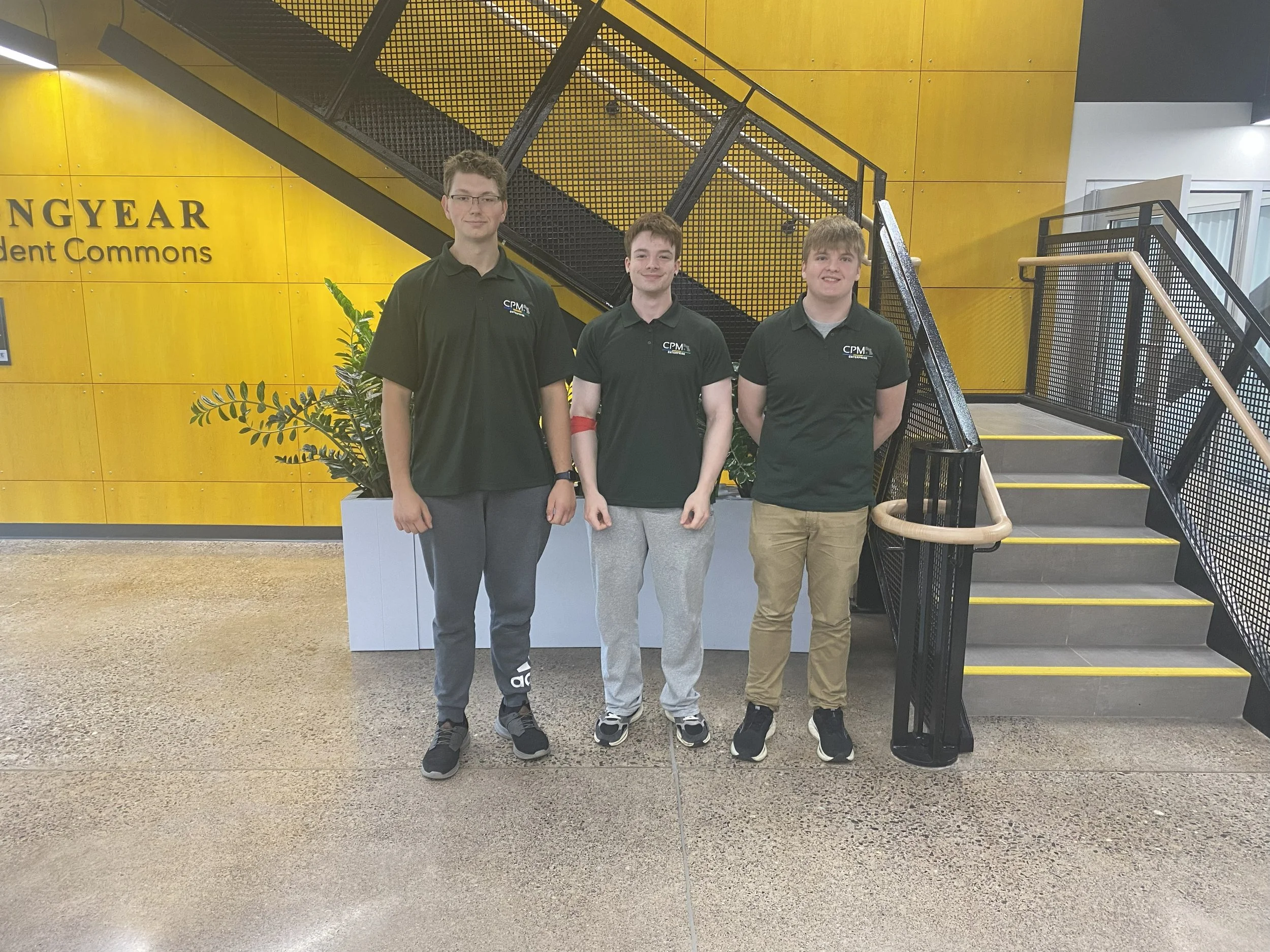Being part of the CPM Team means being part of one of our smaller teams, each devoted to a specific project. Our projects challenge and engage students in different ways, depending on their experiences and areas of expertise. First year or Fifth, it's our goal to create opportunities for success.
AAA Prosthetics: The Development of a Mechanically Simple Foot and Ankle Prosthesis
Spring ‘25 Prosthetic “Rubber Ball” Design
Fall ‘25 AAA team
Looking for a meaningful research project that blends healthcare, engineering, and innovation? Join the AAA Prosthetics team at MTU, where we're developing low-cost, easily manufacturable ankle and foot prosthetics to improve accessibility for those in need.
Since launching in 2017, the project has progressed to the manufacturing stage, with exciting opportunities for student involvement. Current development efforts include producing a rubber ball prosthetic and walker stilt, followed by comprehensive testing—covering comparative stilt analysis, static and cyclic foot testing, rollover assessments, and gait evaluations. Students can contribute through data analysis, prototype refinements, and optimizing design performance.
Get hands-on experience, collaborate with a dedicated research team, and help make a real-world impact. Ready to be part of the future of accessible prosthetics? Contact the Fall 2025 AAA Prosthetic Team Leads Jaden Fus and Kaci Clark or fill out the interest form!
Biogas: Anaerobic Digestion of Dining Hall Food Waste for Methane Production
Biogas Pilot Plant (in one of CPM’s labs)
Fall ‘25 Biogas team
Interested in sustainability and renewable energy? The Biogas project at MTU is an exciting, long-running initiative focused on converting dining hall food scraps into methane and compost through anaerobic digestion. This student-driven enterprise aims to establish a pilot plant on campus, creating a sustainable cycle that benefits the university.
Since its start in 2014, the project has reached key development milestones and is currently progressing toward implementing its pilot plant. Student involvement is crucial in upcoming phases, which include optimizing the plant layout, completing the construction of a mini plant, and running full-scale trials using bacteria sourced from MSU. Other research efforts focus on kinetic analysis, methane production efficiency, and exploring the feasibility of a full-scale biogas facility at MTU.
This is a great opportunity to contribute to impactful research, gain hands-on experience, and help shape the future of campus sustainability. Want to be part of the mission to turn food waste into energy? Contact the Fall 2025 Biogas Team Lead Ania Petrosky or fill out the interest form!
Clean Diesel: Converting University Waste into Biodiesel
Clean Diesel’s jars showing the steps the team takes to convert waste oil to fuel
Fall ‘25 Clean Diesel team
Passionate about sustainability and chemical engineering? The Clean Diesel project at Michigan Tech offers students the chance to turn waste into fuel by converting dining hall soybean oil into biodiesel for university transportation and grounds maintenance.
Each week, MTU dining halls generate around 120 gallons of waste soybean oil—an untapped resource with the potential to reduce fuel costs and promote renewable energy. Since launching in 2020, this initiative has explored biodiesel production methods, and now, student teams can play a key role in advancing the project. Upcoming work includes installing a heating unit and PID loop, conducting larger batch trials, optimizing filtration methods, and reconnecting with dining halls and the broader community to expand impact.
This is an exciting opportunity to gain practical experience in sustainable fuel production while contributing to a greener campus. Ready to take on the challenge? Contact the Fall 2025 Clean Diesel Team Lead Jenna Schild or fill out the interest form!
Combustible Dust Hazards
Previous Sponsor (HBF) logo
Fall ‘25 CDH team
Interested in tackling real-world safety challenges? The Michigan Tech team is conducting a critical study on the potential hazard of dust explosions in water-based adhesives—an important risk factor in industrial environments.
Commissioned by H.B. Fuller (HBF), a global leader in adhesives and sealants, this research aims to provide insights into combustible dust hazards, with findings to be published in a white paper for industry use. As the project moves forward, students will investigate key factors influencing static charge build-up, including moisture in powder formulations and the behavior of hydrophilic versus hydrophobic materials. Testing will continue across various substances to deepen understanding and improve safety protocols.
Whether the contract renews with HBF or continues independently through CPM, this project offers an exciting opportunity for students to gain hands-on experience in industrial research, safety analysis, and materials testing. Ready to dive into a high-impact study? Contact the Fall 2025 HBF Team Lead Zack Maurer or fill out the interest form!
DTE Cooling Pond
Sponsor (DTE Energy) logo
Curious about thermal systems and environmental engineering? The Michigan Tech team is partnering with DTE Energy to investigate heat transfer efficiency in industrial cooling ponds—a vital component of power plant operations.
Image of the DTE facility’s cooling pond
Commissioned by DTE and supported through CPM, this project challenges students to model and simulate the thermal behavior of DTE’s existing cooling pond system. Using both Excel-based tools and computational simulations, the team will explore how conduction, convection, radiation, and vaporization contribute to cooling performance—and what improvements might be possible. The final deliverables include a comparative analysis of proposed enhancements, cost assessments, and actionable recommendations for boosting heat transfer efficiency.
While the project focuses on theoretical modeling rather than real-world testing, it offers a rich opportunity to apply engineering principles to a high-impact energy system. Interested in simulation, thermodynamics, or environmental design? Contact the Fall 2025 DTE Team Lead Wyatt Madden or fill out the interest form to get involved!
MARC Prosthetic Arm
Blown up robotic arm being used as a conceptual aid and physical pre-prototype (MARC-0)
Fall ‘25 MARC team
Want to be part of groundbreaking prosthetic design? The MARC Prosthetic Arm project—standing for Mobile, Affordable, Responsive, and Comfortable—offers students the opportunity to develop motor-feedback systems that enhance movement without invasive implants, all while prioritizing affordability and comfort.
Originally an independent study in Spring 2025, MARC has now fully launched for the Fall 2025 semester. The project’s early phases focused on research, including a literature review, key debates, and an analysis of existing gaps in prosthetic technology. With initial research completed, the team is now moving into design and prototyping. The prosthetic arm aims to replicate natural hand, wrist, and arm movement, including finger flexion/extension, thumb-to-pinky contact, and multi-directional wrist motion.
Students will explore key design challenges such as modifying existing models versus creating a new one, selecting optimal prototyping methods, and integrating safe and efficient motor mechanisms using motors, air, or hydraulics. Safety remains a priority, with components embedded into the sleeve to ensure user comfort and protection. Upcoming student involvement includes growing the team through networking in Fall 2025, forming specialized subteams for electronics, hardware, and design, completing and testing the MARC-0 prototype.
This is an incredible opportunity to collaborate on innovative prosthetic technology while gaining hands-on experience in engineering, programming, and biomechanics. Want to help shape the future of accessible prosthetics? Contact the Fall 2025 MARC Team Lead Alexander Harmon or fill out the interest form!
Portable Oxygen Concentrator (POC)
POC’s current prototype
Fall ‘24 POC Team
Interested in medical device innovation and hands-on engineering? The Portable Oxygen Concentrator (POC) project presents an exciting opportunity to design a slim, lightweight oxygen purification system capable of delivering 99% oxygen at a flow rate of 5 liters per minute.
Originally initiated by Advanced Interactive Response Systems (AIRS), this project was taken over by CPM in Spring 2024 and continues to evolve. While AIRS no longer officially sponsors the work, the team maintains a close collaboration with them to advance development. Current efforts focus on finalizing the first functional prototype to gather crucial data for further research, including Langmuir Constants.
This project offers students the opportunity to contribute to impactful research while gaining valuable experience in system design, testing, and optimization. Want to be part of a team developing life-improving technology? Contact the Fall 2025 POC Team Lead Nicole Keating or fill out the interest form!
